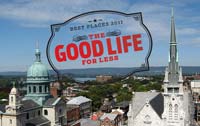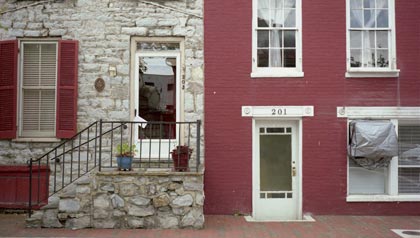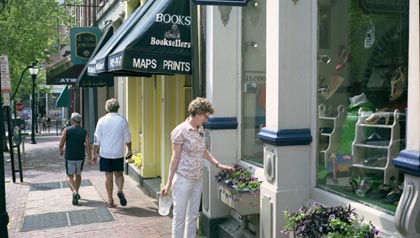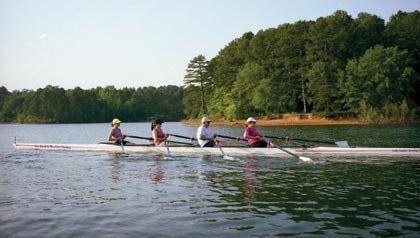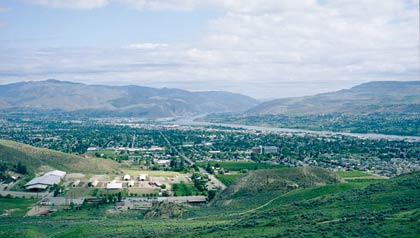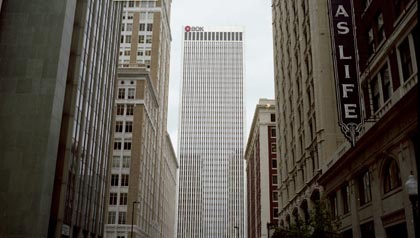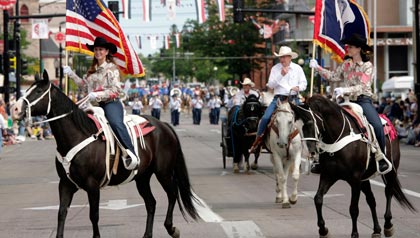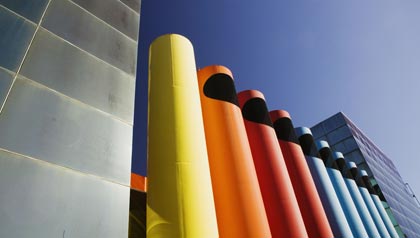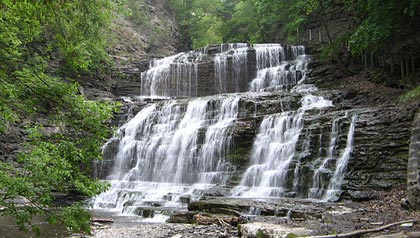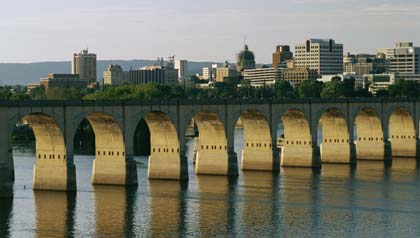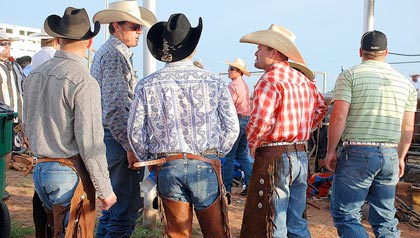10 Affordable Cities for Retirement
These places are a bargain for retirees — and you can't beat the lifestyle
En español | If money didn't matter, there'd be plenty of fabulous places to spend your retirement: a penthouse in Paris. An all-glass modern on the beach in Malibu. Perhaps a small winery in Napa Valley.
See also: How about Costa Rica or France? See the best places for you to retire abroad.
But money does matter. Even as the financial markets limp out of their recessionary funk, many of us are redefining what our "dream" retirement might look like.
Sure, Honolulu has beaches and well-priced pineapples, but few of us can afford its median home price of $550,000. Chicago has world-class dining and lake views galore, though its 9.75 percent sales tax can put those amenities out of reach. Then again, not many of us want to move to a one-stoplight town either, even if it is cheap.
Save Money: Get AARP member discounts on travel, shopping and more
We started our search for the perfect retirement destinations by examining financial data on more than 350 cities across the country. We looked at not only property- and sales-tax rates, median housing price, and cost of living but also the tax rate on pensions and Social Security. Then we added in such criteria as recreation, climate, and arts and culture.
The result: 10 retirement destinations that are affordable and livable.
CORRECTION: The property tax rates for five cities in AARP The Magazine’s "Best Places 2011" story were misstated in many copies of the September/October issue. The correct rates are as follows: Gainesville, GA, 0.776%; Portland, ME, 1.435%; Tulsa, OK, 0.877%; Winchester, VA, 0.553%; Wenatchee, WA, 1.052%.
Source: Sperling’s Best Places
Although just 75 miles away from Washington, D.C., this lovely little Virginia city lulls visitors into a pastoral time warp.
See also: The best places to live the simple life.
Spend hours wandering 250-year-old shady brick streets in its 45-block historic district — stopping in at the Old Court House — or checking out Gaunt's Drug Store, where Patsy Cline worked before heading for Nashville fame.
Winchester and Frederick County were the scene of six major battles during the Civil War, and the city itself changed flags some 70 times during the four-year conflict.
But Winchester isn't just a haven for history buffs. The dozens of small towns that dot surrounding Frederick and Clarke counties offer bucolic bliss: Enjoy miles of rail fences, apple and peach orchards, and lovely stone houses from the 18th and 19th centuries.
When Daisy Goodwin, 71, first discovered the area in the 1980s, she says, "I didn't think I could ever live somewhere so rural, after having grown up in the suburbs and city. It was such a different world — slower-paced and rustic."
But the area's beauty really sold her, and she built a house in nearby Gore in 2004. It's not all agrarian, though, and downtown Winchester offers plenty to do: Goodwin is fond of meandering through the town's galleries, or people watching at Jim Barnett Park.
Next Page: A city with a relaxed urban environment as well as ocean beaches. »
Few people know Portland as well as Joe Loughlin, 58, who spent 28 years on its police force and still patrols the Old Port neighborhood with P.T., his boxer.
See also: America's healthiest hometowns.
"On one hand you have this relaxed urban environment, with all kinds of cultural and art opportunities, but you're just a short drive from everything that makes Maine such a great, outdoorsy place," he says. "In five minutes you can be driving across the bridge to Mackworth Island. The ocean beaches and Casco Bay are right here. There are terrific lakes, too — I'm less than 20 miles from Sebago Lake, which is like a mini Lake Tahoe."
You won't find much in the way of cute here — Portland has proudly preserved its working waterfront.
On Commercial Street you can watch fishermen, loaded down with their catch from the Gulf of Maine, pull into piers and unload some of the world's freshest seafood at discount prices. Lobsters are the famous favorite, but you'll find haddock, salmon, cod, mussels and peekytoe crab, too.
For the area's many devoted foodies, Portland's working-class demeanor masks gourmet deals: The city's restaurant scene is both constantly changing and gaining national recognition. Not long ago Bon Appétit named Portland "the Foodiest Small Town in America."
Says Loughlin: "You get a lot here. Portland is diverse, it's fun, it's evolving — and it's easy to escape when you need to. It's a bargain."
Next Page: The sleepy charm of a prosperous southern town. »
Downtown Gainesville has the sleepy charm of a prosperous southern town, including brick sidewalks and a constantly humming square that attracts shoppers from throughout northern Georgia.
But lovely Lake Lanier, completed by the Army Corps of Engineers back in 1956, is the area's biggest draw, creating an enormous boating playground that attracts about 8 million visitors a year and provides plenty of chances to powerboat, water-ski, and Jet Ski — not to mention sail, row, kayak and canoe.
It was the lake that lured Carolyn Palmer, 62, and her husband, Gary, 66, to Gainesville; they discovered it when they were briefly transferred there in the 1980s.
"When we started talking about retirement, we both knew we wanted to come back here," she says.
They built their dream house right on the water. "We couldn't believe how far we could make our housing dollars go here in Gainesville — we used to have half this much property, half this much house, and triple the taxes — so this is like heaven."
As avid golfers, the Palmers appreciate the area's 15 courses. Their main joy, though, is taking their boat out on Lake Lanier and tying up to neighbors' boats: "It's such a nice way to socialize and enjoy the scenery," says Carolyn.
It's easy to confuse Wenatchee, Washington, with the Garden of Eden. The stunning Columbia River runs through this valley town, which is surrounded by the jagged, glaciated peaks of the Cascade Range.
See also: America's healthiest hometowns.
And unlike in other parts of the Northwest, here you can actually see those views in "the Apple Capital of the World," named for the orchards that encircle the town and produce some of the world's tastiest specimens.
People are drawn to the region for its almost endless recreational options, which include truly top-notch skiing, hiking, camping, hunting and fishing.
You'll also find a steady stream of cyclists, dog walkers, skaters and joggers along the Apple Capital Recreation Loop Trail, a scenic 10-mile paved loop that crosses the Columbia and Wenatchee rivers.
All that and, yes, it's a bargain: "We moved here 29 years ago, in part because it was so much cheaper than Seattle," says Barb Trandum, 67. What made her and husband, Jerry, 67, stay, though, is the hearty appetite locals have for getting involved. "There's just so much here," says Jerry, who is a fan of nearby Rocky Reach Dam and Ohme Gardens, a 9-acre alpine garden.
Tulsans delight in how their city surprises outsiders — it's a small-city jewel, with an impressive art deco district downtown, first-rate art museums and plentiful green spaces.
See also: Ten best states for retirement.
Situated in the northeast corner of the state, with the Arkansas River flowing through it, the city has 26 miles of paved cycling and walking trails that wind among fountains, playgrounds and sculptures.
A few years ago Joel Hulett, 56, and his wife, Ada, 58, considered moving his Tulsa law practice to Los Angeles so he could work for the entertainment industry.
Instead they decided to stay, and he started a film-production company: The couple will help kick off the Tulsa International Film Festival this September.
Ada and Joel also enjoy traveling, so they like the city's proximity to Tulsa International Airport.
But Tulsa's also just a welcoming place. Says Ada: "I've been here 33 years now, and it never fails to impress me how friendly and warm the city is."
Next Page: A city where you'll enjoy the real spirit of the West. »
Cowboy culture and Wild West images are everywhere, and each summer visitors flock here for Frontier Days, still one of the world's largest outdoor rodeo after 115 years.
See also: Best places to retire abroad.
Yes, it's the boot-and-buckle veneer, which includes plenty of horses and trolleys downtown and its "Magic City of the Plains" railroad history, that draws the tourists. But Cheyenne also has a sophisticated side: Stop by the Capitol Grille, for example, and wash down your buffalo carpaccio with what locals say is one heckuva martini.
What makes Cheyenne most appealing to residents, though, is the real spirit of the West: low-rise buildings, wide-open spaces, tumbleweeds and "Neighborhood Night Out" parties, sponsored by the local police, that draw hundreds of residents.
It's not always all stirrups and saddles, though: Each summer, Cheyenne hosts the AARP National Spelling Bee, when the local cowboys make room for the country's best spellers over the age of 50.
Next Page: The Hoosier State's hidden gem. »
Never heard of Columbus? That's fine — residents love this little city's under-the-radar charm.
See also: Aging in place in Indiana.
Less than an hour south of Indianapolis and east of Bloomington, Columbus has it all: design cognoscenti say the city's innovative architecture ranks right up there with Chicago's and San Francisco's.
The city boasts dozens of buildings and pieces of public art by such big names as I. M. Pei, the Saarinens and Henry Moore. Stroll 19 miles of paved People Trails, past wildflower gardens, modernist monuments and quaint neighborhoods.
The area has more than its share of recreational shopping, too: Troll the Exit 76 Antique Mall, one of the largest in the region, or look for bargains at the nearby outlet malls.
And when it's time for a larger culture fix? Bloomington, with Indiana University, is an easy 35-mile drive to the west.
Next Page: Booming wine and food culture with plenty to do for intellectuals. »
Set in the heart of the Finger Lakes' booming wine and food culture, Ithaca provides plenty to do for intellectuals — thanks to Cornell University and Ithaca College.
See also: Best places to live the simple life.
That said, Ithaca is also a great place for nature lovers, who are drawn to the region's breathtaking scenery.
You'll see the bumper sticker "Ithaca Is Gorges" throughout the city, for good reason: Glaciers left behind crystal-blue lakes and waterfalls, and has hiking trails that allow you to see both.
Set at the foot of Cayuga Lake, Ithaca also has plenty of kayaks and yachts, which adds to the city's appeal and outdoorsy-urban hum.
Next Page: Plentiful festivals and events and a magnet for cyclists and pedestrians. »
Editor’s Note: In October, 2011, after publication of this article, the city of Harrisburg filed for bankruptcy protection, though its petition was subsequently dismissed by a federal court. It’s unclear what impact the municipality's financial difficulties will have on its status as an affordable city for retirement.
Harrisburg, Pennsylvania
With its gracious layout, the lovely Susquehanna River, and plentiful festivals and events, Harrisburg is a magnet for cyclists and pedestrians.
Harrisburg's 50,000 shade trees, 4.5-mile-long Riverfront Park and 20-mile greenbelt around the city showcase its modern skyline, lovely old cathedrals, elegant Capitol complex and well-maintained historic districts.
The surrounding Pennsylvania Dutch countryside, with its covered bridges, farms, restored mansions and rich Civil War history, is equally inviting.
Six four-year colleges in the area add musical events, drama — and youthful energy.
Next Page: Where barbecue and mariachi mingle with haute couture and endless cowboy boots. »
Midland was founded as a railroad stop at the midpoint between Fort Worth and El Paso.
See also: Driving through Texas hill country.
The discovery of oil in the 1920s propelled the town from a map speck to one of the state's most affluent communities.
For all its wealth and Big-City skyline, it is still uniquely West Texan: Barbecue and mariachi mingle with haute couture and endless cowboy boots.
For entertainment, check out the Museum of the Southwest and the Midland-Odessa Symphony & Chorale.
But for real action, think Friday Night Lights: In West Texas, high school football is more a religion than a sport.

